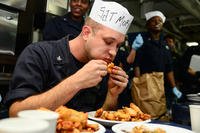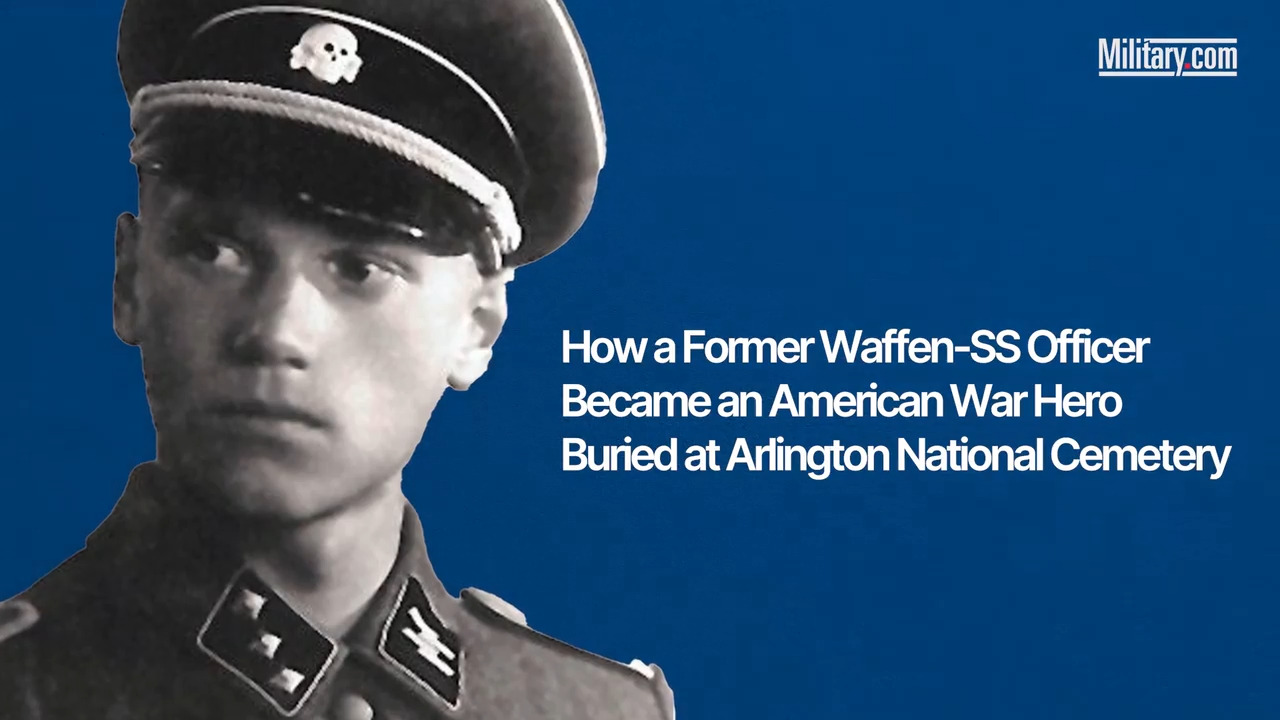While much of the “Star Wars” universe is an otherworldly, fantastical interpretation of the recognizable trope of good versus evil, an abundance of inspiration came from real-world, World War II visuals.
Having been born just one year before the end of the war, and growing up during the 1950’s wave of war movies that followed, George Lucas was able to strike the perfect balance between historical influence and wild imagination when developing some of the most iconic imagery in cinema. From starfighters to the Millennium Falcon, the ideas behind them were born from our own skies.
The X-Wing and the Supermarine Spitfire
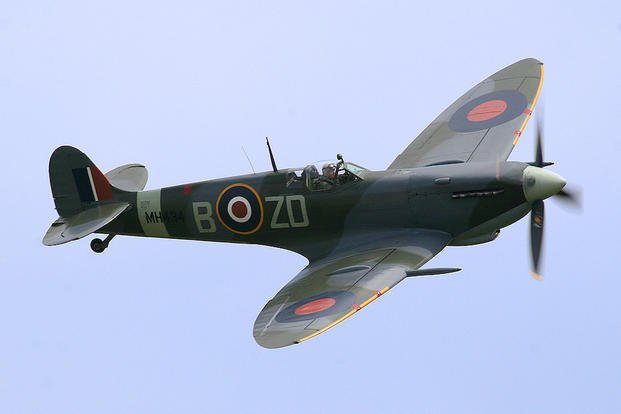
When developing a primary starfighter for the Rebel Alliance, Lucas and his team knew it had to be something that could match the performance of the Imperial forces’ TIE fighters. Putting quantity over quality in many ways, TIE fighters were formidable, mainly due to the numbers in which they were utilized. While notably agile, they gained their upper hand by being deployed in squadrons of 12 fighters, often using six squadrons to make up their full attack wings. To outperform them, the Rebels needed something with equal or better agility, and a little more nuance.
The X-wing starfighters, first seen in "Episode IV: A New Hope" during the Battle of Yavin, quickly became one of the most recognizable–and marketable–images from the original 1977 film. Designed specifically for dogfighting and prolonged flight times, the X-wing became the go-to fighter for the Rebel Alliance, and proved to be able to stand up to the TIE fighters’ power in numbers. As the Star Wars universe grew, predecessors and successors of the X-wing were canonized to create a richer history. The Z-95 Headhunter, ARC-170 and X-83 TwinTail are some of the notable iterations. These reimagined models also lend credence to the argument that X-wings come out on top as the superior craft in comparison to the TIE fighter.

Coming back into the real world, the X-wing got its inspiration from one of the most widely produced and flown British fighters during World War II, the Supermarine Spitfire. Largely recognized for its importance during the Battle of Britain, alongside the Hawker Hurricane (which we’ll get to later on), the single-seat fighter boasted better maneuverability and the ability to reach speeds faster than most Allied aircraft. With each distinguishing elliptical wing eventually housing four .303 Browning machine guns, the Spitfire’s performance against Luftwaffe fighters made it the most sought-after craft among Allied nations in the early days of WWII.
The Royal Air Force made the Spitfire its main fighter following the Battle of Britain, superseding the Hurricane, which had been used in greater numbers against German pilots up until then. The Spitfire played several roles throughout the war, including photo-reconnaissance, interceptor, trainer, and bomber. Much like its fictional counterpart, the Spitfire went through a healthy dose of upgrades and modifications to make sure the form and function continued to meet the demands of the job.
The Millennium Falcon and the B-29 Superfortress

Capable of making “the Kessel Run in less than 12 parsecs,” the Millennium Falcon quickly became a symbol of the unlikely hero. The heavily modified light freighter, formerly known as the Stellar Envoy, was most famously piloted by Han Solo and Chewbacca, fellow smuggler Lando Calrissian, and in the most recent additions to the series, Rey. Han, Lando and Rey all made their own necessary fixes and upgrades to the craft, including weapons, shields, and one of the fastest hyperdrives in the galaxy.
While more traditional looking overall, inspiration for the Falcon’s memorable cockpit, in particular, came from the Boeing B-29 Superfortress. The American made heavy bomber was flown predominantly through WWII and the Korean War, and was skilled at both high and low altitude bombing, despite its size. The Superfortress is also the only aircraft in history to deploy nuclear weapons in combat, having been used in both the Hiroshima and Nagasaki atomic bomb drops.
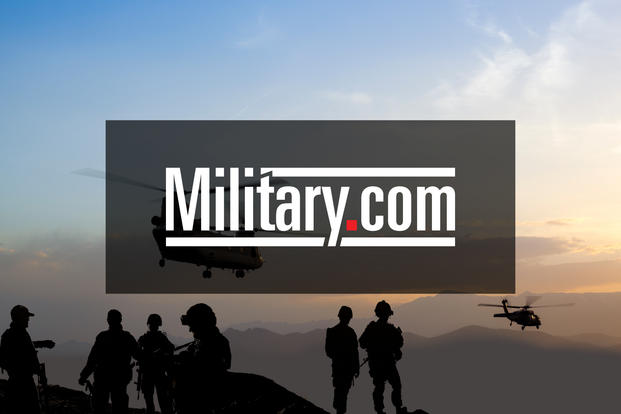
A lot went into the conception of the Falcon, with more than just visual history guiding its creation. When Lucas first started developing the idea for “Star Wars,” he was doing so on an exceptionally small budget. Small enough that their original screening room was set up using furniture from Goodwill, and small enough that many of their early aviation models were piecemealed from various model kits of WWII tanks, ships, and artillery. Even when orchestrating aerial fight scenes, Lucas pulled directly from some of his favorite war films.
“Every time there was a war movie on television, like ‘The Bridges at Toko-Ri [1954]’, I would watch it — and if there was a dogfight sequence, I would videotape it. Then we would transfer that to 16mm film, and I’d just edit it according to my story of Star Wars. It was really my way of getting a sense of the movement of the spaceships.”
When workshopping the best way to add believable sound to the film, sound designer Ben Burtt went straight to the source. Travelling to airfields in Mojave, Burtt recorded P-51 Mustangs, and those Packard Merlin engines served as sound to the majority of the ships in the original film. The recording speeds were tweaked and layered with additional sounds, including thunder and the roars of a lion, in order to get the final product they needed for the Falcon.
The Y-Wing and the Hawker Hurricane
Since we’ve already covered the X-wing and Spitfire, it’s only fair we pay homage to their counterparts. During the Battle of Yavin, the BTL-A4 model Y-wings were dispatched alongside X-wings in order to bypass the Death Star’s main, and much harder to take down, defenses. The goal was to fire proton torpedoes directly into an exhaust port, causing an internal chain reaction that would reach the main reactor, ultimately destroying it. Like their partner craft, Y-wings were ideal for this type of mission, mainly due to their speed and firepower.
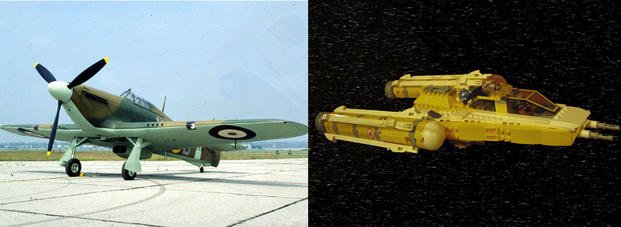
Unlike other Y-wing models, the A4 was a one-man operation, with space behind the cockpit for an astromech droid, who would be responsible for controlling both flight and power distribution systems. These Y-wings wielded an impressive amount of firepower. Each starfighter was equipped with two forward-mounted laser cannons, two proton torpedo launchers and an ion cannon on a rotating turret. All of this was helped by a tracking computer and vector imaging system duo for reliable targeting.
In terms of firepower, the Y-wings have been compared to the P-47 Thunderbolt, which during WWII were considered to be the heaviest fighters from an artillery perspective, coming in at almost 8 tons when fully loaded.

That being said, an even stronger parallel to the Y-wing comes from the single-seat Hawker Hurricane used by the Royal Air Force. Though the Spitfire took the spotlight following the Battle of Britain, Hurricanes were estimated to be responsible for around 60 percent of the Luftwaffe’s losses during that time. Originally built with eight remotely operated Browning machine guns on the wings, it was, like the Y-wing, capable of rapid-fire when needed. While the X-wing and Spitfire got a lot of the fame and notoriety, the consistently hard-hitting Y-wing and Hurricane weren’t always shown the same love, despite their capability.
Lucas is undoubtedly a product of his environment. Growing up on the heels of a world war, and becoming a self-proclaimed history nerd and cinephile are undeniably huge factors in his ability to create an entire universe founded on these very ideas. The similarities between real-life and science fiction make revisiting the “Star Wars” series, and the history books, all the more interesting.
Read the original article on Sandboxx.
Keep Up With the Best in Military Entertainment
Whether you're looking for news and entertainment, thinking of joining the military or keeping up with military life and benefits, Military.com has you covered. Subscribe to the Military.com newsletter to have military news, updates and resources delivered straight to your inbox.
